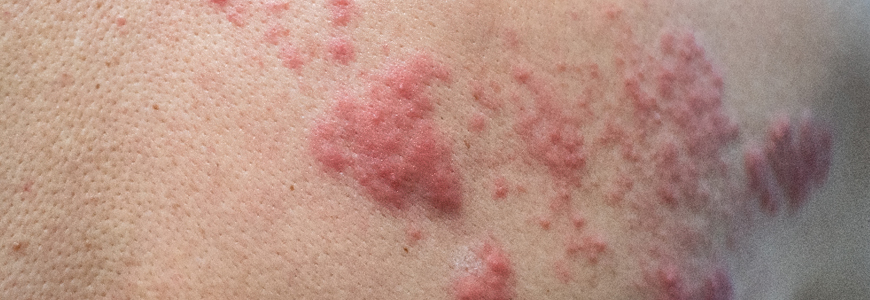A 66-year-old woman with chronic idiopathic urticaria presented to the Duke Asthma, Allergy and Airway Center with red, raised itchy lesions over her entire body. The inflammatory condition was so severe that the discomfort curtailed her professional activities.
For an active college professor and lecturer, the condition was debilitating. As a result of relentless itching and inflammation, the patient reported periods of depression and emotional despair during the most severe episodes.
The woman first experienced symptoms from hives in 2001 while caring for a dying parent, but the presentations in recent months were more painful, frequent, and disruptive.
How did the Duke Asthma and Airway Center team approach treatment of the inflammatory urticaria?
After several visits with the patient, Haley Peterson Hostetler, MD, MSc, an allergy and immunology specialist, concluded that omalizumab, a relatively new biologic, might prove effective for the patient’s severe hives. The drug has received FDA approval for persistent asthma, nasal polyps, and chronic urticaria
The patient was regularly taking diphenhydramine and cetirizine before visiting the clinic, but the drugs had little effect. Hostetler initiated a bridge treatment therapy while the patient waited for approval of the prescription and delivery of omalizumab, which must be administered as an in-clinic injection.
Prednisone was effective in stopping the inflammation associated with urticaria, but Hostetler recommended a relatively short course of the steroid followed by a long taper as the patient began injections of omalizumab. During the patient’s prednisone taper, Hostetler gradually reduced the dosage and frequency, finally overlapping both prednisone and omalizumab for two weeks.
“From a risk/benefit perspective, we don’t want patients taking prednisone very long. Only in the most severe cases would I recommend a long taper,” Hostetler says. In addition to omalizumab, Hostetler recommended a regimen of supplementary drugs.
The patient has increased the dose of cetirizine, her primary antihistamine, by a factor of four. She also takes an over-the-counter antacid for additional antihistamine benefits as well as montelukast sodium to reduce inflammation. Hostetler plans to sustain the regimen for a few months while she monitors the patient’s overall condition, which has improved significantly. Since using omalizumab, she has not experienced a urticaria flare.
“When she presented in our clinic, she was really at her wits’ end,” Hostetler recalls. “From a psychological standpoint, it was clear she was not doing well, but she was still able to articulate how much the inflammation had disrupted her quality of life.”

